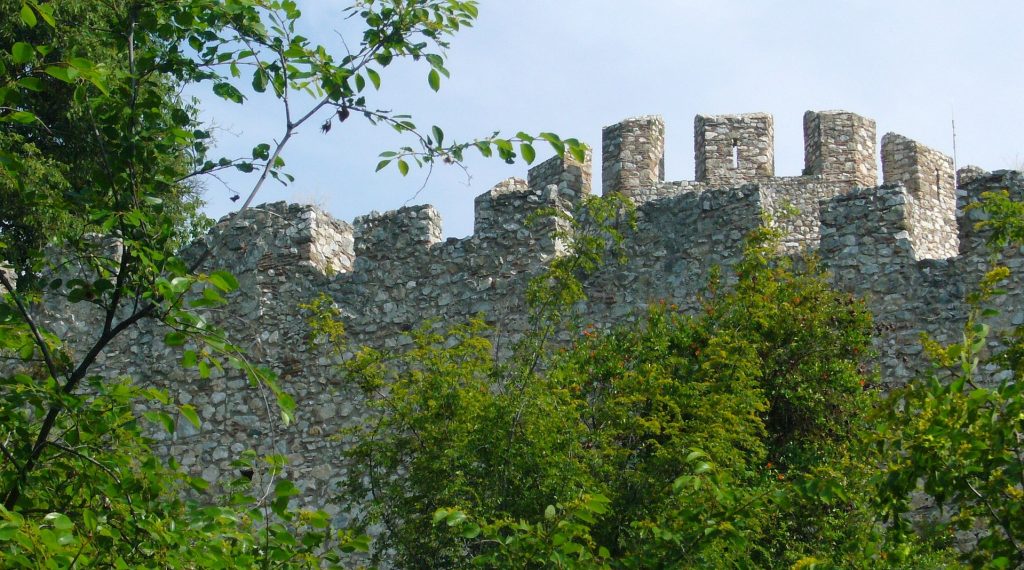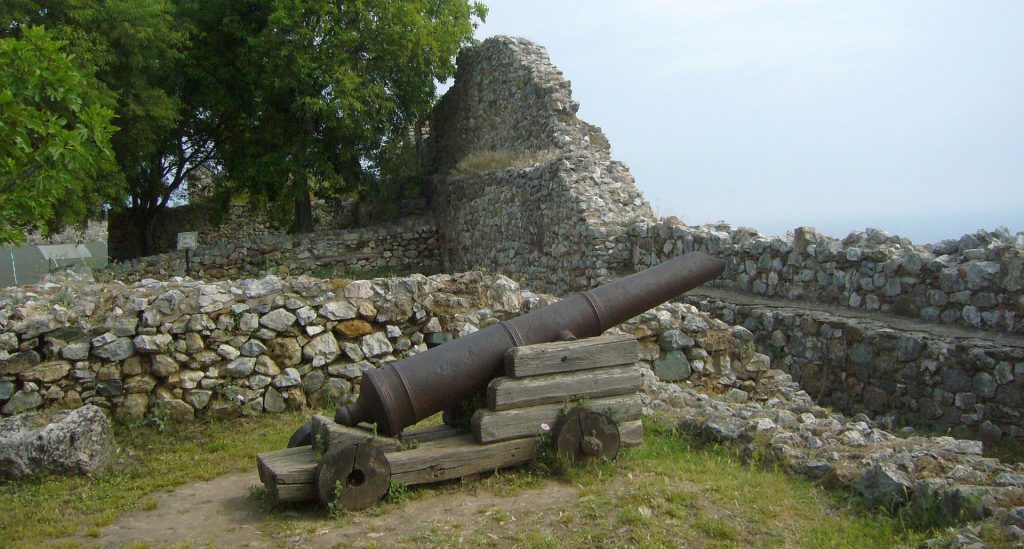We spent a couple of days this week in the Pieria region of Central Macedonia with friend Dave and the indomitable Tex, a Greek sheepdog rescued here in Pelion. Central Macedonia is one of Greece’s thirteen administrative regions; we are in Thessaly.
For those who might be interested in the ongoing row between Greece and the Former Yugoslav Republic of Macedonia (FYROM), which claims Alexander the Great and wishes to be called Macedonia, I offer the following links, picked randomly among the great many that a Google tour will suggest.
https://en.wikipedia.org/wiki/Macedonia_naming_dispute
http://www.mfa.gr/en/fyrom-name-issue/
http://www.washingtonpost.com/wp-dyn/content/article/2009/07/27/AR2009072702653.html
Needless to say, I support the Greek view.
The castle, depending upon whose version of events one decides to follow, was built by the Crusaders at the beginning of the 13th century. Other sources maintain it was Byzantine, and built in the 1100s or perhaps even earlier.
Given its prominent position it was of strategic importance in controlling movement through the Vale of Tempe, which linked north and south, and in monitoring sea invasions. Pirates plundered the region repeatedly, as they did The Pelion.
Phillip 2nd, father of Alexander, marched his men along the Tempe valley on his way to Athens, and while no defensive castle existed at the time, there were certainly other structures. We don’t know precisely what, but work continues on the site and evidence is mounting that the ancient city of Herakleion was sited here.

Long before Phillip, Xerxes trotted his troops through Tempe during Persia’s second invasion of Greece. Leonidas and his men fought to the death at Thermopylae in a vain attempt to stop him getting through the pass. Xerxes and his army then continued south to Athens where the Persians were decisively beaten at Salamis.
The castle was never destroyed, but has fallen into ruin over the centuries. It’s a rather fine example of medieval fortifications with all the bits and pieces one usually associates with such structures: towers, crenellations, loopholes, cannons – the whole nine yards. (Ron points out that the cannons to be seen dotted about the castle grounds are later than anything that would have been used by Crusaders.)


The cistern for water storage would have served the defence tower – all protected by a high wall. Presumably for a last stand?

TAGS: FYROM, Macedonia, Phillip 2nd , Alexander, Platamonas, Thessaly, Pelion, Byzantine, Crusaders, Vale of Tempe, Athens, Xerxes, Persians, Salamis, Thermopylae


















That heaving sigh you heard from across the world was me reviewing our photos from 2010 (?), looking for a pic I took of us in the rented car about to go through a tunnel (which I thought might be the one you pictured here), not finding it, but immersing myself in bliss for the rest of the morning, viewing wonderful vistas and moments shared with you. Then I came back to the blog and darling Tex and learned at least 3 new terms from your links: Vergina Sun, irredentism, and abstand. As always, fascinating and broadening (cause I chomp on Wheat Thins & garden cream cheese dip as I read). Thank you.
Not this tunnel, no. This is the new Tempe tunnel – open only a few weeks. It cuts about 20 minutes off the time, maybe even more if it’s raining. I feel for all the vendors along the old road though. Tex is a champ, a real trooper.
For all the number of times I have passed or visited this castle I had never know the name. So, thanks for that info. Of course, there is the possibility that I was TOLD the name and it disappeared into the ether.
You were told, but it’s not easy to remember if you aren’t familiar with the language. We missed you greatly – lots of new stuff, altho’ we didn’t see it all because Tex was terrified of the distant thunder, and Dave took him back to the car, and we didn’t want to abandon Dave too long.